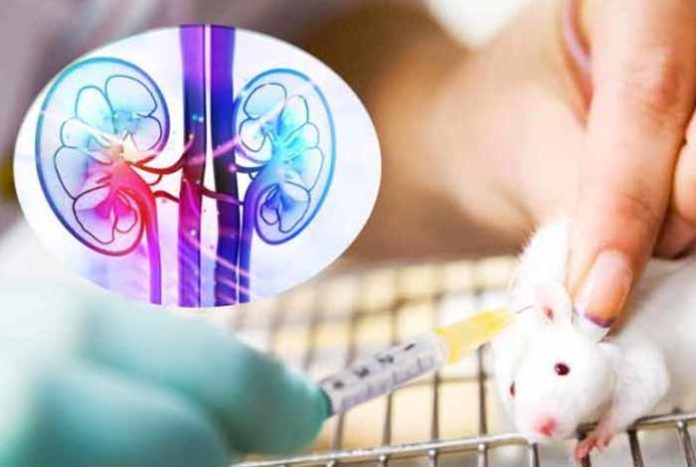
Scientists at University of Manchester have successfully created kidney tissue that functions properly. This tissue was then placed within a living organism and with time, it was able to produce urine as well making this a successful first attempt to produce kidney tissue.
Adrian Woolf and Sue Kimber, professors at The University of Manchester, led this study. According to them, this an important milestone in the treatment of various kidney disorders.
The constituent microscopic parts of a kidney known as glomeruli were grown on a suitable culture medium. These glomeruli were developed from human embryonic stem cells. These were mixed with a gel-like substance that acted as a connective tissue. The tissue was then injected into a live mouse as a tiny clump.
An examination of this mouse after three months of treatment showed that the functional and structural units of the kidneys known as nephrons were formed. This newly formed structure contained all the necessary constituents of kidney- distal tubules, proximal tubules, Loop of Henle and Bowman’s capsule. Blood capillaries which feed the kidneys were also formed. However, these developed kidneys lacked a large artery which is very crucial for normal kidney function. The scientists are also working along with surgeons to put in a large artery to bring more blood to the organ.
To test the efficacy of this newly developed kidney, the researchers injected a fluorescent protein known as dextran. This protein can stain the urine-like substance when the newly-developed kidney filters the blood. The researchers were elated to find dextran in the mini-kidneys tubules. However, much cannot be said about how well this kidney works.
Professor Woolf concluded that globally around 2 million people get dialysis or undergo a kidney transplant each year. Unfortunately, other 2 million people die every year due to their inability to access these treatments. He hopes that this study will lead to better treatment approaches in people with diseased kidneys. They are planning further research into how the produced urine can be eliminated from the system and how can this research benefit people with several kidney diseases.
This study was published in the journal Stem Cell Reports.




